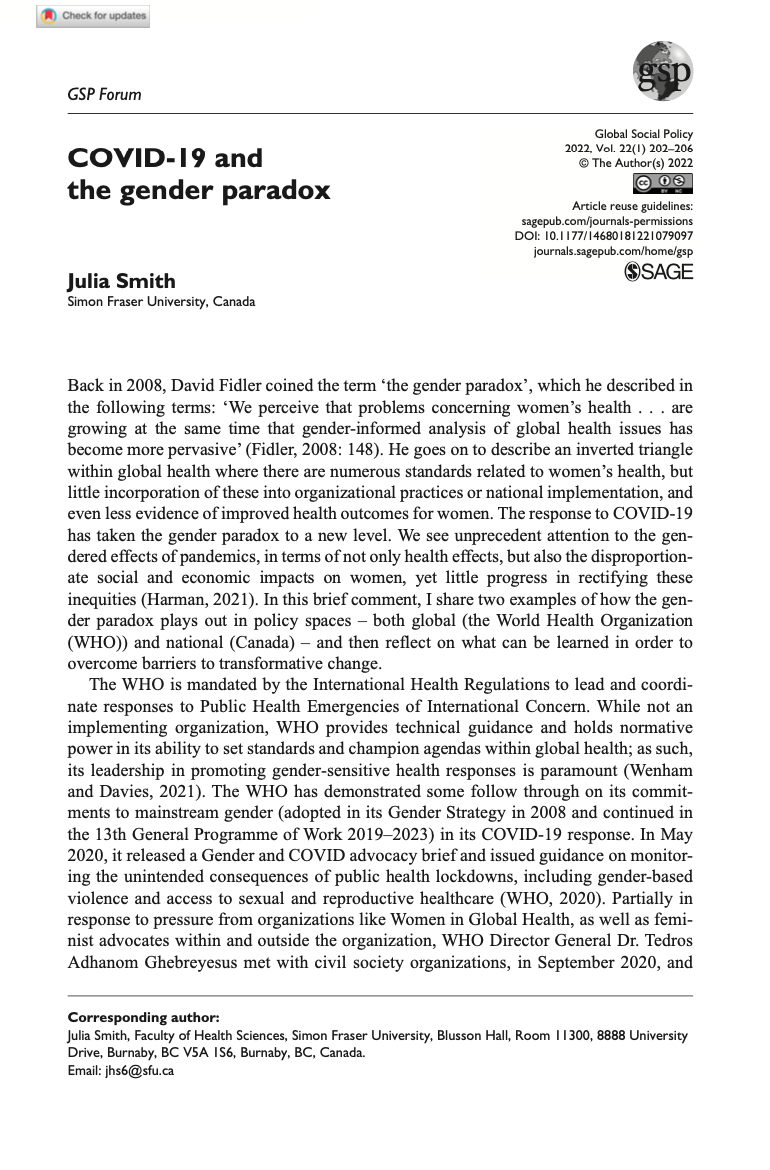COVID-19 and the gender paradox
Back in 2008, David Fidler coined the term ‘the gender paradox’, which he described in the following terms: ‘We perceive that problems concerning women’s health . . . are growing at the same time that gender-informed analysis of global health issues has become more pervasive’ (Fidler, 2008: 148). He goes on to describe an inverted triangle within global health where there are numerous standards related to women’s health, but little incorporation of these into organizational practices or national implementation, and even less evidence of improved health outcomes for women. The response to COVID-19 has taken the gender paradox to a new level. We see unprecedent attention to the gendered effects of pandemics, in terms of not only health effects, but also the disproportionate social and economic impacts on women, yet little progress in rectifying these inequities (Harman, 2021). In this brief comment, I share two examples of how the gender paradox plays out in policy spaces – both global (the World Health Organization (WHO)) and national (Canada) – and then reflect on what can be learned in order to overcome barriers to transformative change.
Smith, J. (2022). COVID-19 and the gender paradox. Global Social Policy, 22(1), 202–206. https://doi.org/10.1177/14680181221079097






